SWC75
Bored Historian
- Joined
- Aug 26, 2011
- Messages
- 33,981
- Like
- 65,548
Wikipedia has an excellent article on the history of Golf Majors:
 en.wikipedia.org
en.wikipedia.org
I was fascinated by the amorphous history of the ‘majors’. Golf at one time was like boxing: you had a champion and someone would challenge him and if he could defeat him, he became the new champion. Then Alan Robertson, the champion since 1843, suddenly died in 1859. The following year it was decided to hold a tournament to determine the new champion. It was decided to include both amateurs and professionals in the tournament, (amateurs were considered a higher class of people because they played just for the love of the game – and could afford to – but Robertson was a professional and he was the guy they were trying to find a successor to). The tournament was such a popular success they decided to abandon the linear format in favor of an annual tournament. And the Open Champion, (the British Open to us Yanks), became the first major.
In 1885 the amateur crowd decided they wanted to have a championship of their own and the Amateur championship, (AKA the British Amateur) was born. The USA followed suit with The US Open and the US Amateur in in 1895. The British PGA, per the Wikipedia Article, was considered “as important to British and Commonwealth professionals as the PGA Championship was to Americans”. The British PGA was a match-play tournament from 1903-1954, then, starting in 1955 there were match-play and stroke play championships, (TV likes stroke play better for several reasons). The last British PGA match play tournament was in 1979. The USA PGA tournament began in 1916 and was match-play until 1957, then switch to stroke play without becoming separate tournaments. The article also says “many U.S. players such as Byron Nelson also considered the Western Open, (1899-2006), and the North and South Open, (1902-51) as two of golf's majors.” Bobby Jones and Clifford Roberts founded the Masters tournament in 1934. Then there was George May’s “World Championship of Golf” at the Tam O'Shanter Country Club, in Niles, Illinois, played from 1946-1957, where the prize money at its height exceeded that of the rest of the tour combined.
Many factors could be part of the definition of a major but the important one would be that the top players, if healthy, (and able to travel the distance in the early days), would make sure to be there because they knew that their legacy would be based on how they did in these tournaments. But did these tournaments always meet that definition? The American tournaments didn’t in the first couple of decades unless top British pros, such as Vardon and Ray in 1913, when Francis Ouimet beat them at Brookline, were touring the US and decided to play in them. That caused an explosion in interest in golf in the US, (similar to what Mary Lou Retton did for gymnastics in the 80’s). But did that make the American tournaments majors immediately? Walter Hagen fought through the teens and 20’s to gain acceptance for professional golf in the United States. Was the PGA immediately a major from the time it began? I’ve heard that Gene Sarazen’s ‘double-eagle’ in 1935 “put the Masters on the map” but I’m sure Jones’ association with it didn’t hurt. Sam Snead won the British Open in 1946 but didn’t get enough prize money to pay his expenses and declared he would not come back and his fellow American pros followed suit. To Americans, the British tournaments became a backwater without the top American players just as the American tournaments were a backwater to the British a half-century earlier. Ben Hogan had stopped playing in the PGA after his accident because match-play required playing two rounds a day and his legs couldn’t take it. In 1953, the US PGA and the British Open were played on the same weekend so Hogan, who had won the Masters and US Open, went to Britain and won their Open, the greatest year since Jones’ grand slam.
But he had no chance at the modern “Grand Slam” because it didn’t exist yet. Dan Jenkins, Sport Illustrated’s long-time golf writer is quoted in the article as saying: “the pros didn't talk much about majors back then. I think it was Herbert Warren Wind who starting using the term. He said golfers had to be judged by the major tournaments they won, but it's not like there was any set number of major tournaments." That concept appears to be the invention of Arnold Palmer, who won the masters and US Open in 1960 and announced his intention of winning the British open and PGA to complete a modern ‘Grand Slam’. He finished second in the Open and won the next two to re-popularize that tournament in America but never did win the PGA. Everybody’s dream since then has been to complete what Arnie couldn’t. No one has but Tiger Woods came close when the won the 2000 US and British Opens, the PGA and then the 2001 Masters.
Woods’ success brought up the issue of whether and when he would break jack Nicklaus’ record for majors wins. Jack had 18 wins in the “Palmer Slam” tournaments. Tiger won his 14th with 2008 US Open. After various problems put his career in low gear, he came back to win the 2019 Masters. I don’t know if he has another win in him but if he gets one the talk about catching Nicklaus could be reborn. It’s something I’ve been thinking about ever since I read that Wikipedia article years ago. Nicklaus was said to have broken Jones’ record of 13 Grand Slam wins when he won the 1975 PGA but Jones’ total includes 5 US Amateurs and 6 British Amateurs. If you count only the Palmer Slam tournaments, his total was only 7. Jack surpassed Walter Hagen’s total of 11 wins, (2 US Opens, 4 British Opens and 5 PGAs), was surpassed when Jack won the 1973 PGA.
But Jack has always said that he considers his victories in the 1959 and 1961 US Amateurs to be major wins, as they were in Jones’ day. I recall reading the early issues of Sports illustrated from 1954 at a library and noticing that the first golf tournament they did a big article on was the US Amateur, (won by Palmer). They obviously considered it a major in 1954. If you allow Jones to keep his Amateur wins, and allow Jack to count his, Jack has 20 majors and surpassed Bobby with that 1973 PGA. But Tiger won the 1994, 1995 and 1996 US Amateurs. Do they count? If they do, Tiger has 18 majors to Jack’s 20. Or do we tell Tiger that his Amateurs don’t count because by then they were no longer majors? When did they stop? And what about the fact that Jack won 2 Western Opens and Tiger won 3?
What is needed is a committee to decide what constitutes a major tournament and which tournaments met that definition in what year? I’m not qualified to do that. But one thing I can do is to create a database of who has won the tournaments mentioned in the Wikipedia article and in what year and what the “major standings” would be based on that. At least we’ll get an idea of what the rest of the iceberg of these players ‘major’ careers might really look like.
The Tournaments:
British Open (BO): The Open Championship - Wikipedia (1860-)
British Amateur (BA): The Amateur Championship - Wikipedia (1885-)
US Open (USO): U.S. Open (golf) - Wikipedia (1895-)
US Amateur (USA): United States Amateur Championship (golf) - Wikipedia (1895-)
Western Open WO): Western Open - Wikipedia (1899-2006)
North and South Open (NS): North and South Open - Wikipedia (1902-1951)
British Matchplay PGA (BM): British PGA Matchplay Championship - Wikipedia (1903-1979)
US PGA (PGA): PGA Championship - Wikipedia (1916-)
Masters (M): Masters Tournament - Wikipedia (1934-)
World Championship of Golf (WC): World Championship of Golf - Wikipedia (1946-57)
British Strokeplay PGA (BS): BMW PGA Championship - Wikipedia (1955-)
The following golfers have won at least five of these tournaments. How many of them would be classified as ‘majors’ by that committee of golf historians I don’t know. But this is the database they’d be working from. I’ve linked a Wikipedia article for each.
Jack Nicklaus 1959USA, 1961USA, 1962USO, 1963M, 1963PGA, 1965M, 1966M 1966BO, 1967WO, 1967USO, 1968WO, 1970BO, 1971PGA, 1972M 1972USO, 1973PGA, 1975M, 1975PGA 1978BO, 1980USO, 1980PGA, 1986M (22)
Jack Nicklaus - Wikipedia
Tiger Woods 1994USAA, 1995USA, 1996USA, 1997M, 1997WO, 1999WO, 1999PGA, 2000USO, 2000BO, 2000PGA, 2001M, 2002M, 2002USO, 2003WO, 2005M, 2005BO, 2006BO, 2006PGA, 2007PGA, 2008USO, 2019M (21)
Tiger Woods - Wikipedia
Walter Hagen 1914USO, 1916WO, 1918NS, 1919USO, 1921WO, 1921PGA, 1922BO, 1923NS, 1924NS, 1924BO, 1924PGA, 1925PGA, 1926PGA, 1926WO, 1927PGA, 1927WO, 1928BO, 1929BO, 1932WO (19)
Walter Hagen - Wikipedia
Ben Hogan 1940NS, 1942NS, 1946WO, 1946NS, 1946PGA, 1947WC, 1948WO, 1948USO, 1948PGA, 1950USO, 1951M, 1951USO, 1951WC, 1952M, 1953USO,
1953BO (16)
Ben Hogan - Wikipedia
Bobby Jones 1923USO, 1924USA, 1925USA, 1926USO, 1926BO, 1927USA, 1927BO, 1928USA, 1929USO, 1930USA, 1930USO, 1930BA, 1930BO (13)
Bobby Jones (golfer) - Wikipedia
Sam Snead 1941NS, 1942PGA, 1946BO, 1946WC, 1949WO, 1949M, 1949NS, 1949PGA, 1950WO, 1950NS, 1951PGA, 1952M, 1954M (13)
Sam Snead - Wikipedia
Arnold Palmer 1954USA, 1958M, 1960M, 1960USO, 1961WO, 1961BO, 1962M, 1962BO, 1963WO, 1964M, 1975SP (11)
Arnold Palmer - Wikipedia
Tom Watson 1974WO, 1975BO, 1977M, 1977WO, 1977BO, 1980BO, 1981M, 1982USO, 1982BO, 1983BO, 1984WO (11)
Tom Watson (golfer) - Wikipedia
John Ball 1888BA, 1890BA, 1890BO, 1892BA, 1894BA, 1899BA, 1907BA, 1910BA,
1912BA (9)
John Ball (golfer) - Wikipedia
Jim Barnes 1914WO, 1916NS, 1916PGA, 1917WO, 1919WO, 1919PGA, 1919NS, 1921USO, 1924BO (9)
Jim Barnes - Wikipedia
Nick Faldo 1978SP, 1980SP, 1981SP, 1987BO, 1989M, 1989SP, 1990M, 1990BO, 1992BO, 1996M (9)
Nick Faldo - Wikipedia
Gary Player 1959BO, 1961M, 1962PGA, 1965USO, 1968BO, 1972PGA, 1974M, 1974BO, 1978M (9)
Gary Player - Wikipedia
Peter Thomson 1954MP, 1954BO, 1955BO, 1956BO, 1958BO, 1962MP, 1965BO, 1966MP, 1967MP (9)
Peter Thomson (golfer) - Wikipedia
Willie Anderson 1901USO, 1902WO, 1903USO, 1904WO, 1904USO, 1905USO, 1908WO, 1909WO (8)
Willie Anderson (golfer) - Wikipedia
James Braid 1901BO, 1903MP, 1905MP, 1905BO, 1906BO, 1908BO, 1910BO, 1911MP (8)
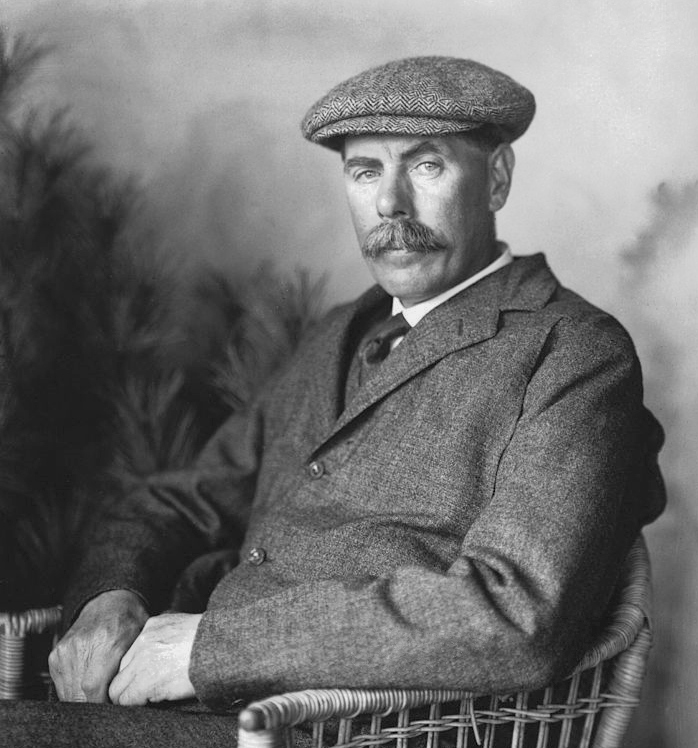
 en.wikipedia.org
en.wikipedia.org
Gene Sarazen 1922USO, 1922PGA, 1923PGA, 1930WO, 1932USO, 1932BO, 1933PGA,
1935M (8)
Gene Sarazen - Wikipedia
Harry Vardon 1896BO, 1898BO, 1899BO, 1900USO, 1903BO, 1911BO, 1912MP, 1914BO (8)
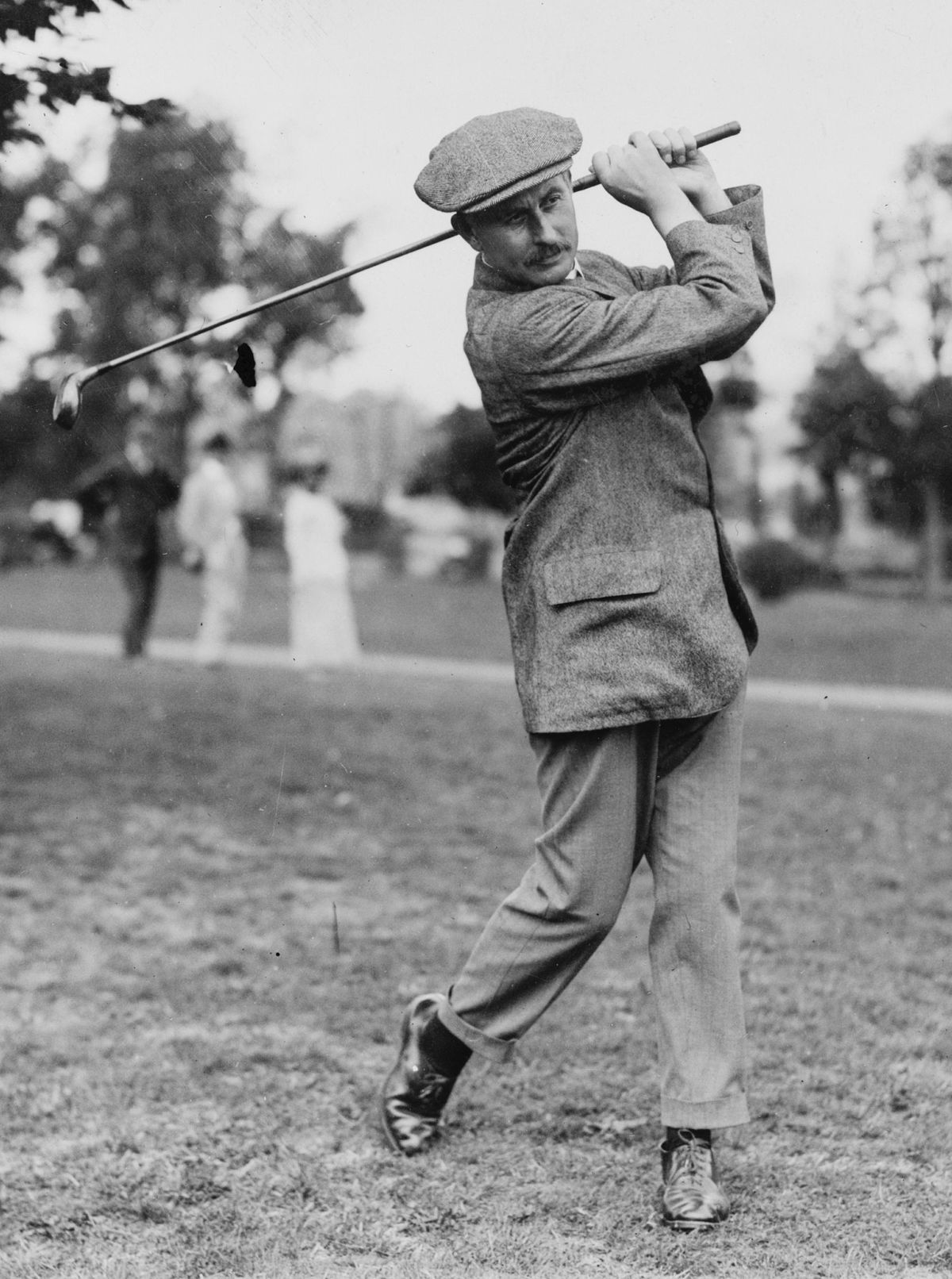
 en.wikipedia.org
en.wikipedia.org
Billy Casper 1959USO, 1965WO, 1966WO, 1969WO, 1966USO, 1970M, 1973WO (7)
Billy Casper - Wikipedia
Harold Hilton 1892BO, 1897BO, 1900BA, 1901BA, 1911BA, 1911USA, 1913BA (7)
Harold Hilton - Wikipedia
Phil Mickelson 1990USA, 2004M, 2005PGA, 2006M, 2010M, 2013BO, 2021PGA (7)
Phil Mickelson - Wikipedia
Byron Nelson 1937M, 1939WO, 1939NS, 1939USO, 1940PGA, 1942M, 1945PGA (7)
Byron Nelson - Wikipedia
Alec Ross 1902NS, 1904NS, 1907NS, 1907USO, 1908NS, 1910NS, 1915NS (7)
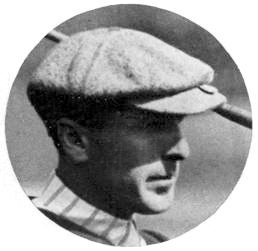
 en.wikipedia.org
en.wikipedia.org
John Henry Taylor 1894BO, 1895BO, 1900BO, 1904MP, 1908MP, 1909BO, 1913BO (7)
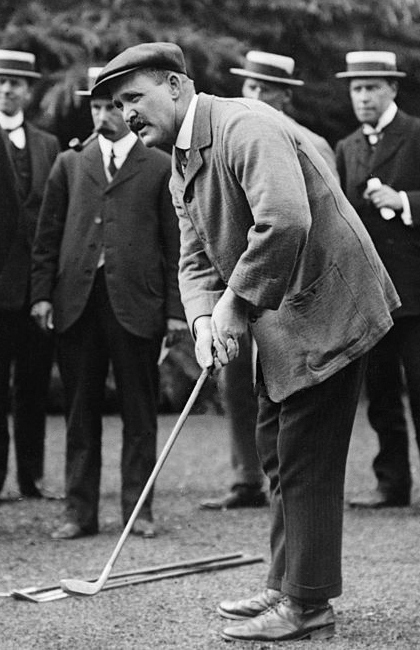
 en.wikipedia.org
en.wikipedia.org
Seve Ballesteros 1979BO, 1980M, 1983M, 1984BO, 1988BO, 1991SP (6)
Seve Ballesteros - Wikipedia
Henry Cotton 1932MP, 1934BO, 1937BO, 1940MP, 1946MP, 1948BO (6)
Henry Cotton (golfer) - Wikipedia
Ralph Guldahl 1936WO, 1937WO, 1937USO, 1938WO, 1938USO, 1939M (6)
Ralph Guldahl - Wikipedia
Lee Trevino 1968USO, 1971USO, 1971BO, 1972BO, 1974PGA, 1984PGA (6)
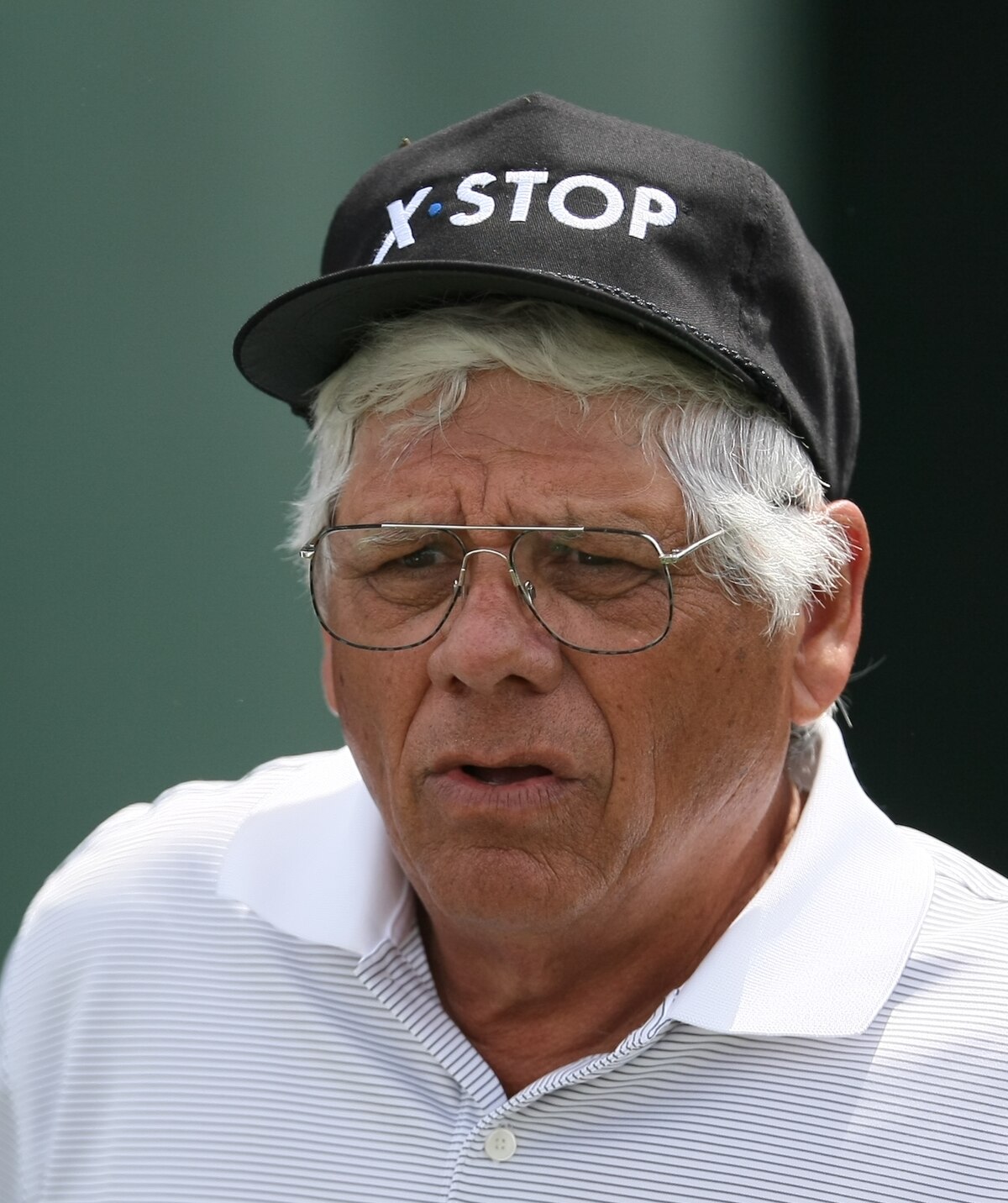
 en.wikipedia.org
en.wikipedia.org
Michael Bonallack 1961BA, 1965BA, 1968BA, 1969BA, 1970BA (5)
 en.wikipedia.org
en.wikipedia.org
Julius Boros 1952USO, 1952WC, 1955WC, 1963USO, 1968PGA (5)
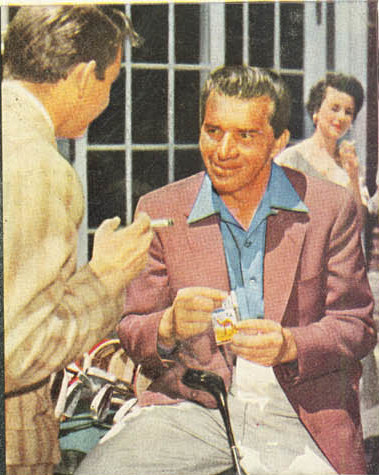
 en.wikipedia.org
en.wikipedia.org
Jock Hutchison 1920WO, 1920PGA, 1921NS, 1921BO, 1923WO (5)
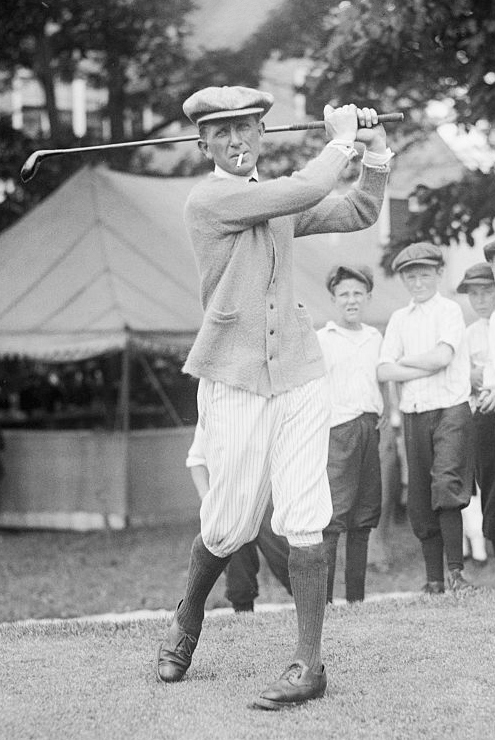
 en.wikipedia.org
en.wikipedia.org
Lawson Little 1934BA, 1934USA, 1935BA, 1935USA, 1940USO (5)
Lawson Little - Wikipedia
Rory McIlroy 2011USO, 2012PGA, 2014BO, 2014PGA, 2014SP (5)
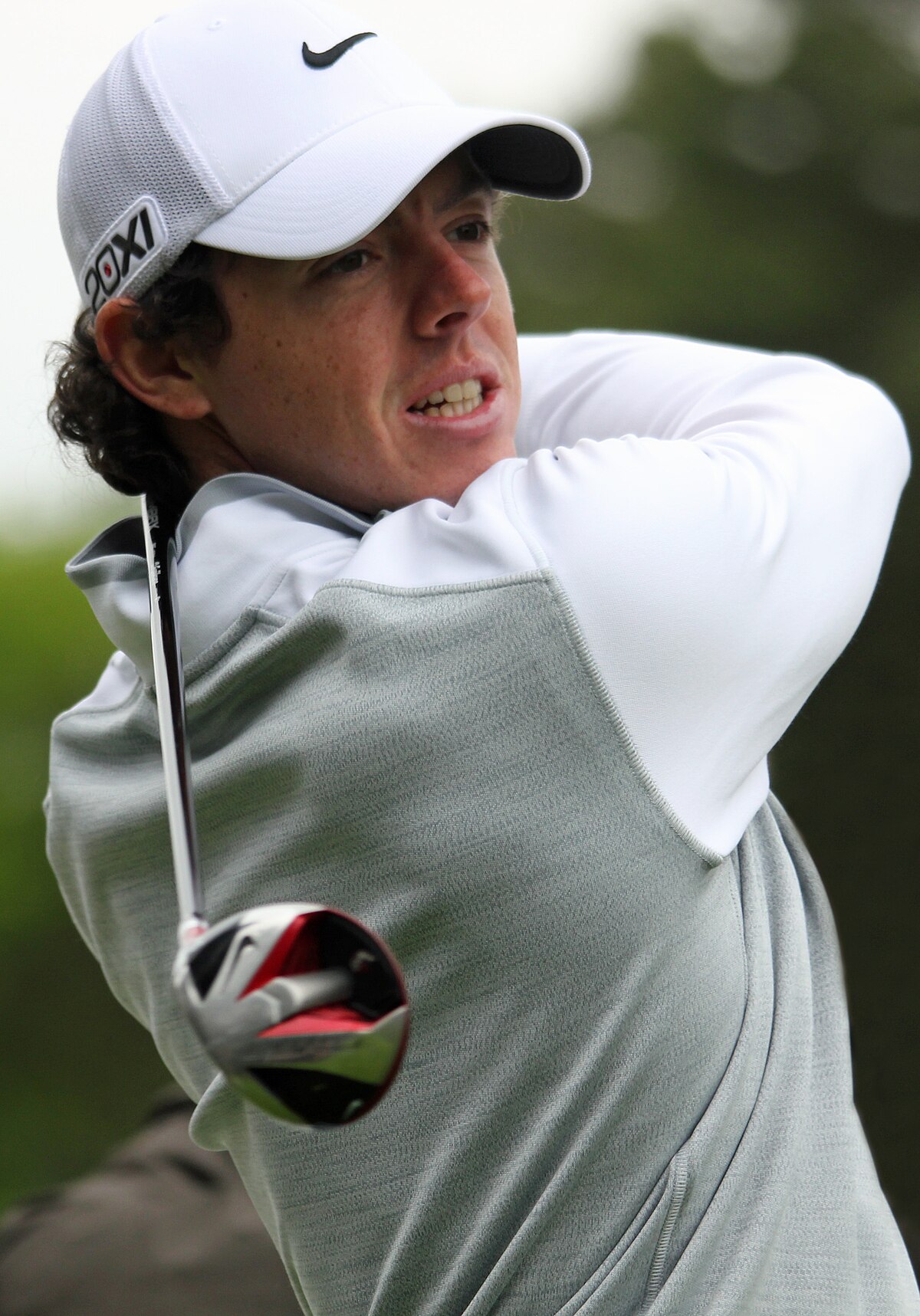
 en.wikipedia.org
en.wikipedia.org
Cary Middlecoff 1945NS, 1949USO, 1955M, 1955WO, 1956USO (5)
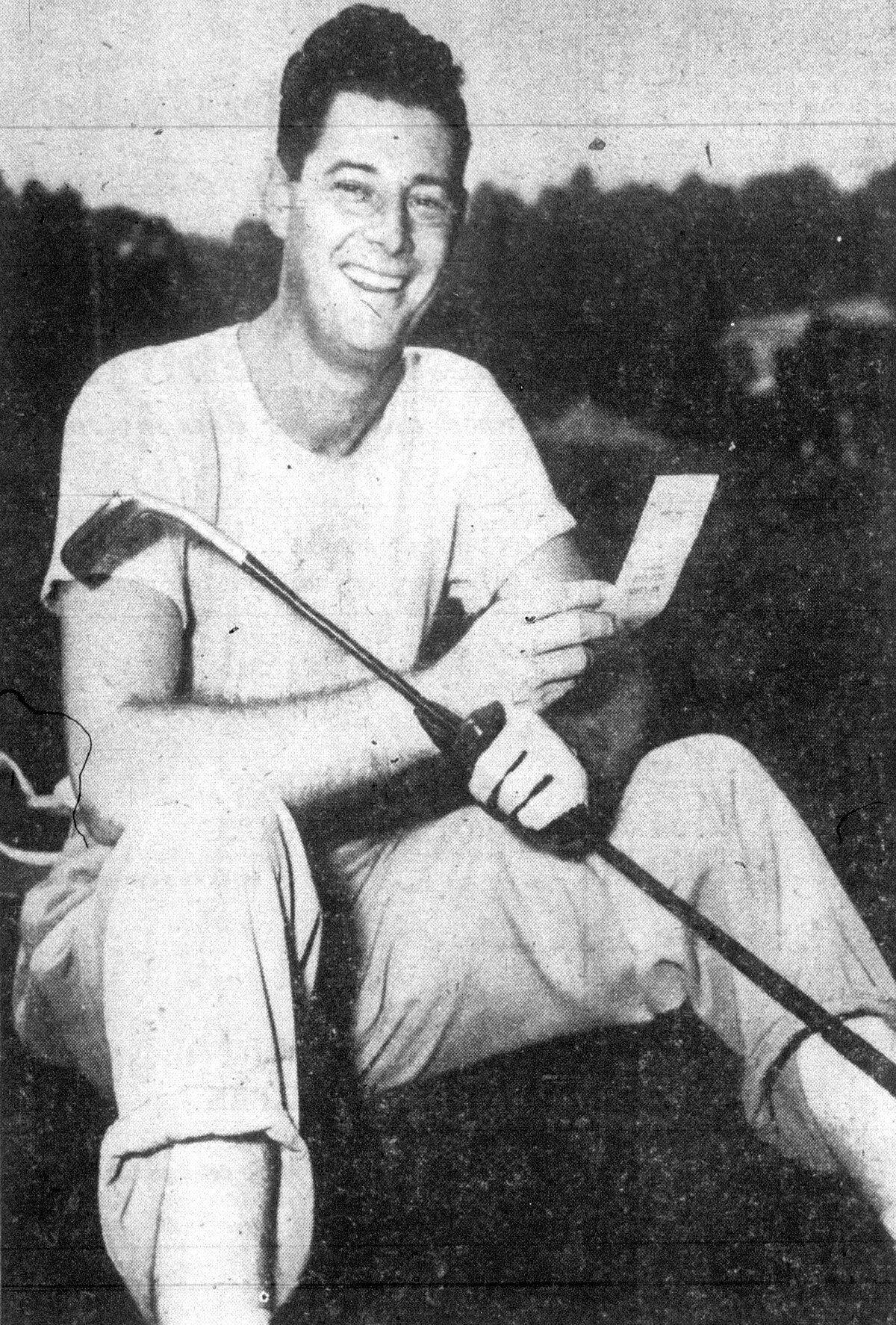
 en.wikipedia.org
en.wikipedia.org
Nick Price 1992PGA, 1993WO, 1994PGA, 1994WO, 1994BO (5)
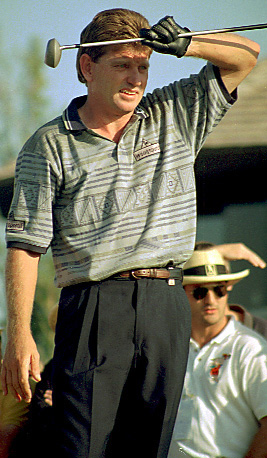
 en.wikipedia.org
en.wikipedia.org
Dai Rees 1936MP, 1938MP, 1949MP, 1950MP, 1959SP (5)
 en.wikipedia.org
en.wikipedia.org
Jerome Travers 1907USA, 1908 USA, 1912USA, 1913USA, 1915USO (5)
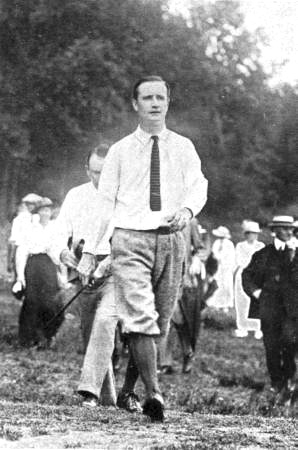
 en.wikipedia.org
en.wikipedia.org
Men's major golf championships - Wikipedia
I was fascinated by the amorphous history of the ‘majors’. Golf at one time was like boxing: you had a champion and someone would challenge him and if he could defeat him, he became the new champion. Then Alan Robertson, the champion since 1843, suddenly died in 1859. The following year it was decided to hold a tournament to determine the new champion. It was decided to include both amateurs and professionals in the tournament, (amateurs were considered a higher class of people because they played just for the love of the game – and could afford to – but Robertson was a professional and he was the guy they were trying to find a successor to). The tournament was such a popular success they decided to abandon the linear format in favor of an annual tournament. And the Open Champion, (the British Open to us Yanks), became the first major.
In 1885 the amateur crowd decided they wanted to have a championship of their own and the Amateur championship, (AKA the British Amateur) was born. The USA followed suit with The US Open and the US Amateur in in 1895. The British PGA, per the Wikipedia Article, was considered “as important to British and Commonwealth professionals as the PGA Championship was to Americans”. The British PGA was a match-play tournament from 1903-1954, then, starting in 1955 there were match-play and stroke play championships, (TV likes stroke play better for several reasons). The last British PGA match play tournament was in 1979. The USA PGA tournament began in 1916 and was match-play until 1957, then switch to stroke play without becoming separate tournaments. The article also says “many U.S. players such as Byron Nelson also considered the Western Open, (1899-2006), and the North and South Open, (1902-51) as two of golf's majors.” Bobby Jones and Clifford Roberts founded the Masters tournament in 1934. Then there was George May’s “World Championship of Golf” at the Tam O'Shanter Country Club, in Niles, Illinois, played from 1946-1957, where the prize money at its height exceeded that of the rest of the tour combined.
Many factors could be part of the definition of a major but the important one would be that the top players, if healthy, (and able to travel the distance in the early days), would make sure to be there because they knew that their legacy would be based on how they did in these tournaments. But did these tournaments always meet that definition? The American tournaments didn’t in the first couple of decades unless top British pros, such as Vardon and Ray in 1913, when Francis Ouimet beat them at Brookline, were touring the US and decided to play in them. That caused an explosion in interest in golf in the US, (similar to what Mary Lou Retton did for gymnastics in the 80’s). But did that make the American tournaments majors immediately? Walter Hagen fought through the teens and 20’s to gain acceptance for professional golf in the United States. Was the PGA immediately a major from the time it began? I’ve heard that Gene Sarazen’s ‘double-eagle’ in 1935 “put the Masters on the map” but I’m sure Jones’ association with it didn’t hurt. Sam Snead won the British Open in 1946 but didn’t get enough prize money to pay his expenses and declared he would not come back and his fellow American pros followed suit. To Americans, the British tournaments became a backwater without the top American players just as the American tournaments were a backwater to the British a half-century earlier. Ben Hogan had stopped playing in the PGA after his accident because match-play required playing two rounds a day and his legs couldn’t take it. In 1953, the US PGA and the British Open were played on the same weekend so Hogan, who had won the Masters and US Open, went to Britain and won their Open, the greatest year since Jones’ grand slam.
But he had no chance at the modern “Grand Slam” because it didn’t exist yet. Dan Jenkins, Sport Illustrated’s long-time golf writer is quoted in the article as saying: “the pros didn't talk much about majors back then. I think it was Herbert Warren Wind who starting using the term. He said golfers had to be judged by the major tournaments they won, but it's not like there was any set number of major tournaments." That concept appears to be the invention of Arnold Palmer, who won the masters and US Open in 1960 and announced his intention of winning the British open and PGA to complete a modern ‘Grand Slam’. He finished second in the Open and won the next two to re-popularize that tournament in America but never did win the PGA. Everybody’s dream since then has been to complete what Arnie couldn’t. No one has but Tiger Woods came close when the won the 2000 US and British Opens, the PGA and then the 2001 Masters.
Woods’ success brought up the issue of whether and when he would break jack Nicklaus’ record for majors wins. Jack had 18 wins in the “Palmer Slam” tournaments. Tiger won his 14th with 2008 US Open. After various problems put his career in low gear, he came back to win the 2019 Masters. I don’t know if he has another win in him but if he gets one the talk about catching Nicklaus could be reborn. It’s something I’ve been thinking about ever since I read that Wikipedia article years ago. Nicklaus was said to have broken Jones’ record of 13 Grand Slam wins when he won the 1975 PGA but Jones’ total includes 5 US Amateurs and 6 British Amateurs. If you count only the Palmer Slam tournaments, his total was only 7. Jack surpassed Walter Hagen’s total of 11 wins, (2 US Opens, 4 British Opens and 5 PGAs), was surpassed when Jack won the 1973 PGA.
But Jack has always said that he considers his victories in the 1959 and 1961 US Amateurs to be major wins, as they were in Jones’ day. I recall reading the early issues of Sports illustrated from 1954 at a library and noticing that the first golf tournament they did a big article on was the US Amateur, (won by Palmer). They obviously considered it a major in 1954. If you allow Jones to keep his Amateur wins, and allow Jack to count his, Jack has 20 majors and surpassed Bobby with that 1973 PGA. But Tiger won the 1994, 1995 and 1996 US Amateurs. Do they count? If they do, Tiger has 18 majors to Jack’s 20. Or do we tell Tiger that his Amateurs don’t count because by then they were no longer majors? When did they stop? And what about the fact that Jack won 2 Western Opens and Tiger won 3?
What is needed is a committee to decide what constitutes a major tournament and which tournaments met that definition in what year? I’m not qualified to do that. But one thing I can do is to create a database of who has won the tournaments mentioned in the Wikipedia article and in what year and what the “major standings” would be based on that. At least we’ll get an idea of what the rest of the iceberg of these players ‘major’ careers might really look like.
The Tournaments:
British Open (BO): The Open Championship - Wikipedia (1860-)
British Amateur (BA): The Amateur Championship - Wikipedia (1885-)
US Open (USO): U.S. Open (golf) - Wikipedia (1895-)
US Amateur (USA): United States Amateur Championship (golf) - Wikipedia (1895-)
Western Open WO): Western Open - Wikipedia (1899-2006)
North and South Open (NS): North and South Open - Wikipedia (1902-1951)
British Matchplay PGA (BM): British PGA Matchplay Championship - Wikipedia (1903-1979)
US PGA (PGA): PGA Championship - Wikipedia (1916-)
Masters (M): Masters Tournament - Wikipedia (1934-)
World Championship of Golf (WC): World Championship of Golf - Wikipedia (1946-57)
British Strokeplay PGA (BS): BMW PGA Championship - Wikipedia (1955-)
The following golfers have won at least five of these tournaments. How many of them would be classified as ‘majors’ by that committee of golf historians I don’t know. But this is the database they’d be working from. I’ve linked a Wikipedia article for each.
Jack Nicklaus 1959USA, 1961USA, 1962USO, 1963M, 1963PGA, 1965M, 1966M 1966BO, 1967WO, 1967USO, 1968WO, 1970BO, 1971PGA, 1972M 1972USO, 1973PGA, 1975M, 1975PGA 1978BO, 1980USO, 1980PGA, 1986M (22)
Jack Nicklaus - Wikipedia
Tiger Woods 1994USAA, 1995USA, 1996USA, 1997M, 1997WO, 1999WO, 1999PGA, 2000USO, 2000BO, 2000PGA, 2001M, 2002M, 2002USO, 2003WO, 2005M, 2005BO, 2006BO, 2006PGA, 2007PGA, 2008USO, 2019M (21)
Tiger Woods - Wikipedia
Walter Hagen 1914USO, 1916WO, 1918NS, 1919USO, 1921WO, 1921PGA, 1922BO, 1923NS, 1924NS, 1924BO, 1924PGA, 1925PGA, 1926PGA, 1926WO, 1927PGA, 1927WO, 1928BO, 1929BO, 1932WO (19)
Walter Hagen - Wikipedia
Ben Hogan 1940NS, 1942NS, 1946WO, 1946NS, 1946PGA, 1947WC, 1948WO, 1948USO, 1948PGA, 1950USO, 1951M, 1951USO, 1951WC, 1952M, 1953USO,
1953BO (16)
Ben Hogan - Wikipedia
Bobby Jones 1923USO, 1924USA, 1925USA, 1926USO, 1926BO, 1927USA, 1927BO, 1928USA, 1929USO, 1930USA, 1930USO, 1930BA, 1930BO (13)
Bobby Jones (golfer) - Wikipedia
Sam Snead 1941NS, 1942PGA, 1946BO, 1946WC, 1949WO, 1949M, 1949NS, 1949PGA, 1950WO, 1950NS, 1951PGA, 1952M, 1954M (13)
Sam Snead - Wikipedia
Arnold Palmer 1954USA, 1958M, 1960M, 1960USO, 1961WO, 1961BO, 1962M, 1962BO, 1963WO, 1964M, 1975SP (11)
Arnold Palmer - Wikipedia
Tom Watson 1974WO, 1975BO, 1977M, 1977WO, 1977BO, 1980BO, 1981M, 1982USO, 1982BO, 1983BO, 1984WO (11)
Tom Watson (golfer) - Wikipedia
John Ball 1888BA, 1890BA, 1890BO, 1892BA, 1894BA, 1899BA, 1907BA, 1910BA,
1912BA (9)
John Ball (golfer) - Wikipedia
Jim Barnes 1914WO, 1916NS, 1916PGA, 1917WO, 1919WO, 1919PGA, 1919NS, 1921USO, 1924BO (9)
Jim Barnes - Wikipedia
Nick Faldo 1978SP, 1980SP, 1981SP, 1987BO, 1989M, 1989SP, 1990M, 1990BO, 1992BO, 1996M (9)
Nick Faldo - Wikipedia
Gary Player 1959BO, 1961M, 1962PGA, 1965USO, 1968BO, 1972PGA, 1974M, 1974BO, 1978M (9)
Gary Player - Wikipedia
Peter Thomson 1954MP, 1954BO, 1955BO, 1956BO, 1958BO, 1962MP, 1965BO, 1966MP, 1967MP (9)
Peter Thomson (golfer) - Wikipedia
Willie Anderson 1901USO, 1902WO, 1903USO, 1904WO, 1904USO, 1905USO, 1908WO, 1909WO (8)
Willie Anderson (golfer) - Wikipedia
James Braid 1901BO, 1903MP, 1905MP, 1905BO, 1906BO, 1908BO, 1910BO, 1911MP (8)

James Braid (golfer) - Wikipedia
Gene Sarazen 1922USO, 1922PGA, 1923PGA, 1930WO, 1932USO, 1932BO, 1933PGA,
1935M (8)
Gene Sarazen - Wikipedia
Harry Vardon 1896BO, 1898BO, 1899BO, 1900USO, 1903BO, 1911BO, 1912MP, 1914BO (8)

Harry Vardon - Wikipedia
Billy Casper 1959USO, 1965WO, 1966WO, 1969WO, 1966USO, 1970M, 1973WO (7)
Billy Casper - Wikipedia
Harold Hilton 1892BO, 1897BO, 1900BA, 1901BA, 1911BA, 1911USA, 1913BA (7)
Harold Hilton - Wikipedia
Phil Mickelson 1990USA, 2004M, 2005PGA, 2006M, 2010M, 2013BO, 2021PGA (7)
Phil Mickelson - Wikipedia
Byron Nelson 1937M, 1939WO, 1939NS, 1939USO, 1940PGA, 1942M, 1945PGA (7)
Byron Nelson - Wikipedia
Alec Ross 1902NS, 1904NS, 1907NS, 1907USO, 1908NS, 1910NS, 1915NS (7)

Alec Ross - Wikipedia
John Henry Taylor 1894BO, 1895BO, 1900BO, 1904MP, 1908MP, 1909BO, 1913BO (7)

John Henry Taylor - Wikipedia
Seve Ballesteros 1979BO, 1980M, 1983M, 1984BO, 1988BO, 1991SP (6)
Seve Ballesteros - Wikipedia
Henry Cotton 1932MP, 1934BO, 1937BO, 1940MP, 1946MP, 1948BO (6)
Henry Cotton (golfer) - Wikipedia
Ralph Guldahl 1936WO, 1937WO, 1937USO, 1938WO, 1938USO, 1939M (6)
Ralph Guldahl - Wikipedia
Lee Trevino 1968USO, 1971USO, 1971BO, 1972BO, 1974PGA, 1984PGA (6)

Lee Trevino - Wikipedia
Michael Bonallack 1961BA, 1965BA, 1968BA, 1969BA, 1970BA (5)
Michael Bonallack - Wikipedia
Julius Boros 1952USO, 1952WC, 1955WC, 1963USO, 1968PGA (5)

Julius Boros - Wikipedia
Jock Hutchison 1920WO, 1920PGA, 1921NS, 1921BO, 1923WO (5)

Jock Hutchison - Wikipedia
Lawson Little 1934BA, 1934USA, 1935BA, 1935USA, 1940USO (5)
Lawson Little - Wikipedia
Rory McIlroy 2011USO, 2012PGA, 2014BO, 2014PGA, 2014SP (5)

Rory McIlroy - Wikipedia
Cary Middlecoff 1945NS, 1949USO, 1955M, 1955WO, 1956USO (5)

Cary Middlecoff - Wikipedia
Nick Price 1992PGA, 1993WO, 1994PGA, 1994WO, 1994BO (5)

Nick Price - Wikipedia
Dai Rees 1936MP, 1938MP, 1949MP, 1950MP, 1959SP (5)
Dai Rees - Wikipedia
Jerome Travers 1907USA, 1908 USA, 1912USA, 1913USA, 1915USO (5)

